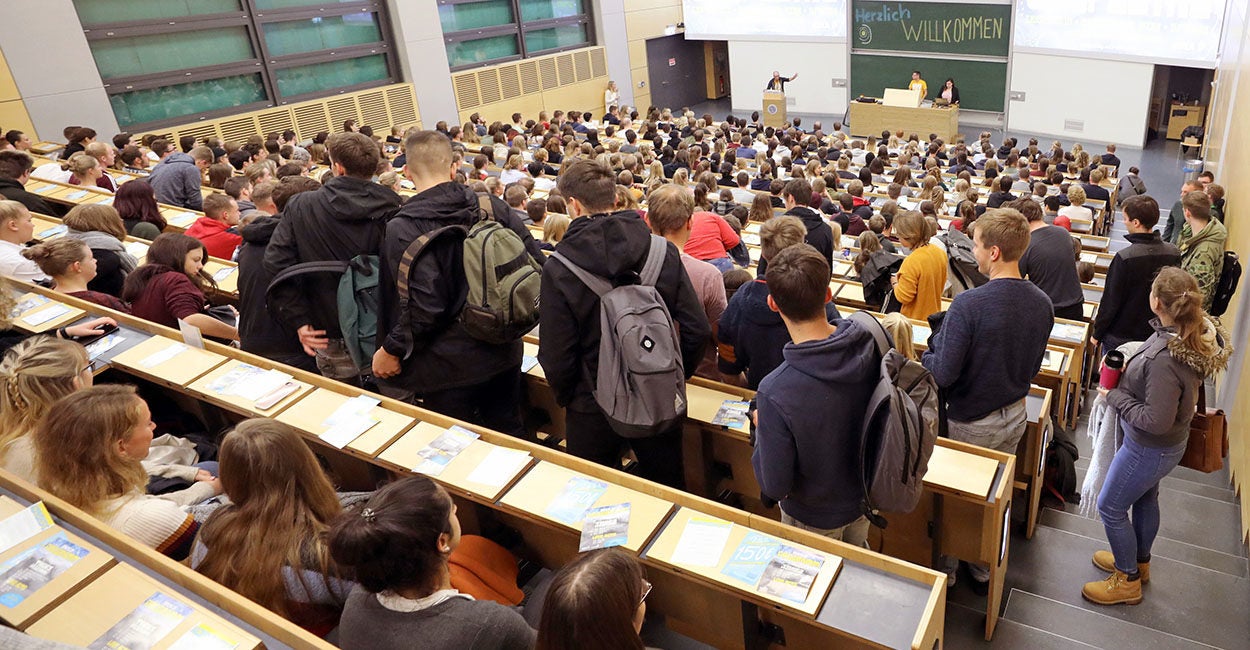A recently released study confirms the suspicion that American higher education has become absurdly and ruthlessly monolithic in terms of political ideology.
The study found that the ratio of college professor donations to Democrats as opposed to Republicans was 95:1.
Besides federal agency employees, few other industries outside working for the Democratic National Committee or the media are so strongly skewed toward Democrats and the left.
The Daily Signal depends on the support of readers like you. Donate now
The authors of the study, Heterodox Academy Research Director Sean Stevens and Brooklyn College Professor Mitchell Langbert, admit to some uncertainty on the numbers.
But even if the disparity in donations isn’t quite so high, it’s still clearly extreme and highly problematic, as the researchers explain.
“Researchers have raised concerns that ideological homogeneity may lead to questionable research practices,” Stevens and Langbert wrote. “This concern is grounded in research on confirmation bias, group polarization, motivated reasoning, and the tendency for these phenomena to be even more pronounced among the highly educated. As well, partisan polarization has been leading to Republicans’ increasing skepticism about higher education.”
Beyond problematic research is the larger problem that, at all but a handful of Americans colleges, young Americans are being dropped straight into left-wing indoctrination centers.
Anyone who has recently attended a college or university knows that even if one avoids politics and the humanities in their coursework, most campuses are pervasively left-wing. From professors, to administrators, to the most vocal students, rarely does one find a campus with even a tiny bit of ideological balance.
Unfortunately, this trend has been clear for a long time.
After all, William F. Buckley wrote “God and Man at Yale,” which highlighted the left-wing excesses at the prestigious university, more than a half-century ago. Yale was hardly alone.
Despite that warning, college environments aren’t improving.
Many campuses are now hostile to free speech, not only catering to a rigidly left-wing environment, but actively stifling any kind of dissent.
It’s not hard to see why so-called “cancel culture” is becoming deeply ingrained in our society. This just mirrors what’s already happening in our schools.
Convincing these institutions that intellectual diversity should be prioritized is clearly not working. If anything, it seems campuses are becoming more uniform, not less.
Then, on top of the ideological issue is the increasing problem of student debt and the question of whether the cost of going to school matches the value the degree ultimately brings.
Taxpayers, most of whom never had the privilege of attending college, are now being asked to bail out those who did attend largely on their dimes.
The bailouts are billed as a boon to students, but the biggest beneficiaries are the colleges.
The losers are pretty much everyone else.
Why should we let colleges off the hook en masse when it’s the perpetual promise of more federal dollars that caused costs to skyrocket in the first place?
Again, the burden of this bailout will fall on the middle class, not universities.
We should reconsider the reasons why Washington funds postsecondary institutions and whether the current system is an appropriate federal role.
Instead of handing what amounts to a blank check to these schools—and allowing them to pile up debt on the backs of graduates and eventually the taxpayers—we should start cutting the cord.
Washington has overstepped its bounds in many different ways with higher education policy, and we are now experiencing the effects of a government run amok.
As my colleague, Arthur Milikh, who is the associate director of the B. Kenneth Simon Center for Principles and Politics at The Heritage Foundation, wrote in a provocative essay for National Affairs, perhaps left-wing dominance of higher education should make us question why we continue to pour so much money into it as we have done for generations.
The reality is that higher education has become increasingly financially bloated, ideologically rigid, and often fails to even protect the basic constitutional rights of students.































